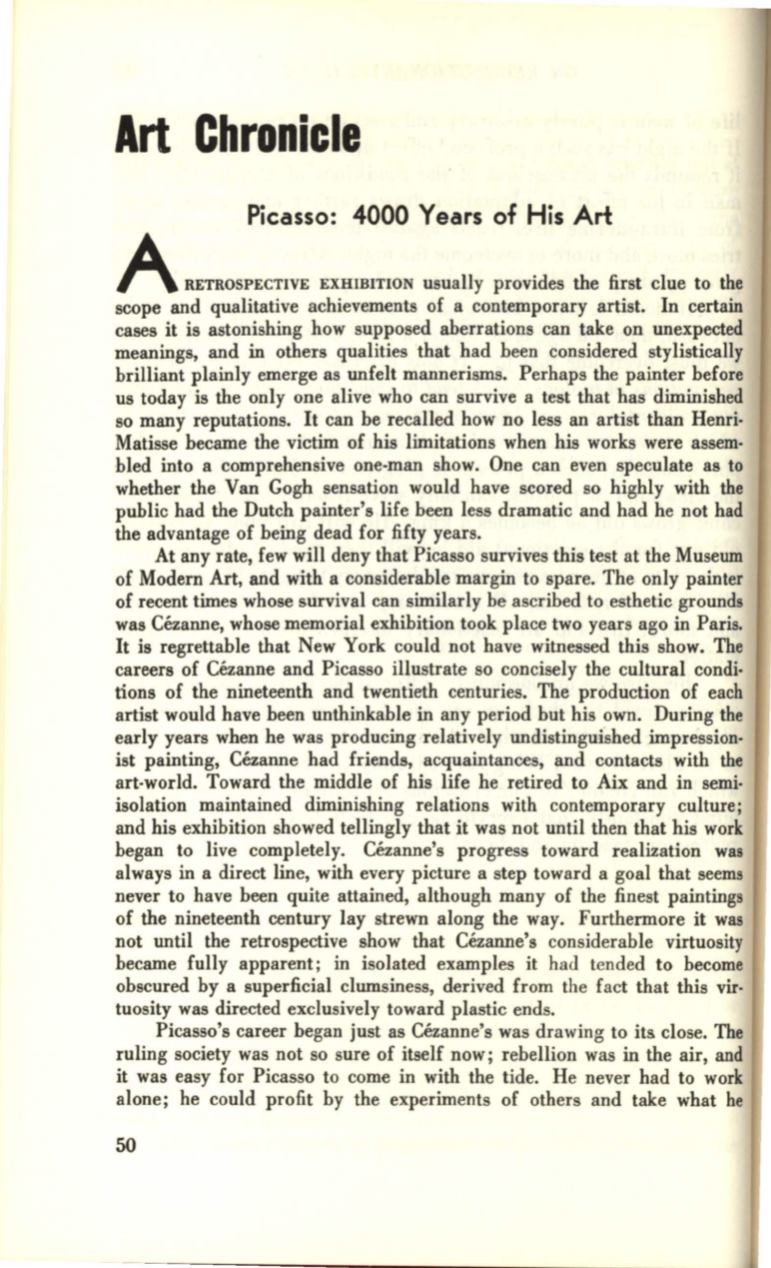
Art Chronicle
Picasso: 4000 Years of His Art
A
RETROSPECTIVE EXHIBITION
usually provides the first clue to the
scope and qualitative achievements of a contemporary artist. In certain
cases it is astonishing how supposed aberrations can take on unexpected
meanings, and in others qualities that had been considered stylistically
brilliant plainly emerge as unfelt mannerisms. Perhaps the painter before
us today is the only one alive who can survive a test that has diminished
so many reputations. It can be recalled how no less an artist than Henri·
Matisse became the victim of his limitations when his works were assem·
bled into a comprehensive one·man show. One can even speculate as to
whether the Van Gogh sensation would have scored so highly with the
public had the Dutch painter's life been less dramatic and had he not had
the advantage of being dead for fifty years.
At any rate, few will deny that Picasso survives this test at the Museum
of Modern Art, and with a considerable margin to spare. The only painter
of recent times whose survival can similarly be ascribed to esthetic grounds
was Cezanne, whose memorial exhibition took place two years ago in Paris.
It is regrettable that New York could not have witnessed this show. The
careers of Cezanne and Picasso illustrate so concisely the cultural condi·
tions of the nineteenth and twentieth centuries. The production of each
artist would have been unthinkable in any period but his own. During the
early years when he was producing relatively undistinguished impression·
ist painting, Cezanne had friends, acquaintances, and contacts with the
art·world. Toward the middle of his life he retired to Aix and in semi·
isolation maintained diminishing relations with contemporary culture;
and his exhibition showed tellingly that it was not until then that his work
began to live completely. Cezanne's progress toward realization was
always in a direct line, with every picture a step toward a goal that seems
never to have been quite attained, although many of the finest paintings
of the nineteenth century lay strewn along the way. Furthermore it was
not until the retrospective show that Cezanne's considerable virtuosity
became fully apparent; in isolated examples it had tended to become
obscured by a superficial clumsiness, derived from the fact that this vir·
tuosity was directed exclusively toward plastic ends.
Picasso's career began just as cezanne's was drawing to its close. The
ruling society was not so sure of itself now; rebellion was in the air, and
it was easy for Picasso to come in with the tide. He never had to work
alone; he could profit by the experiments of others and take what he
50


